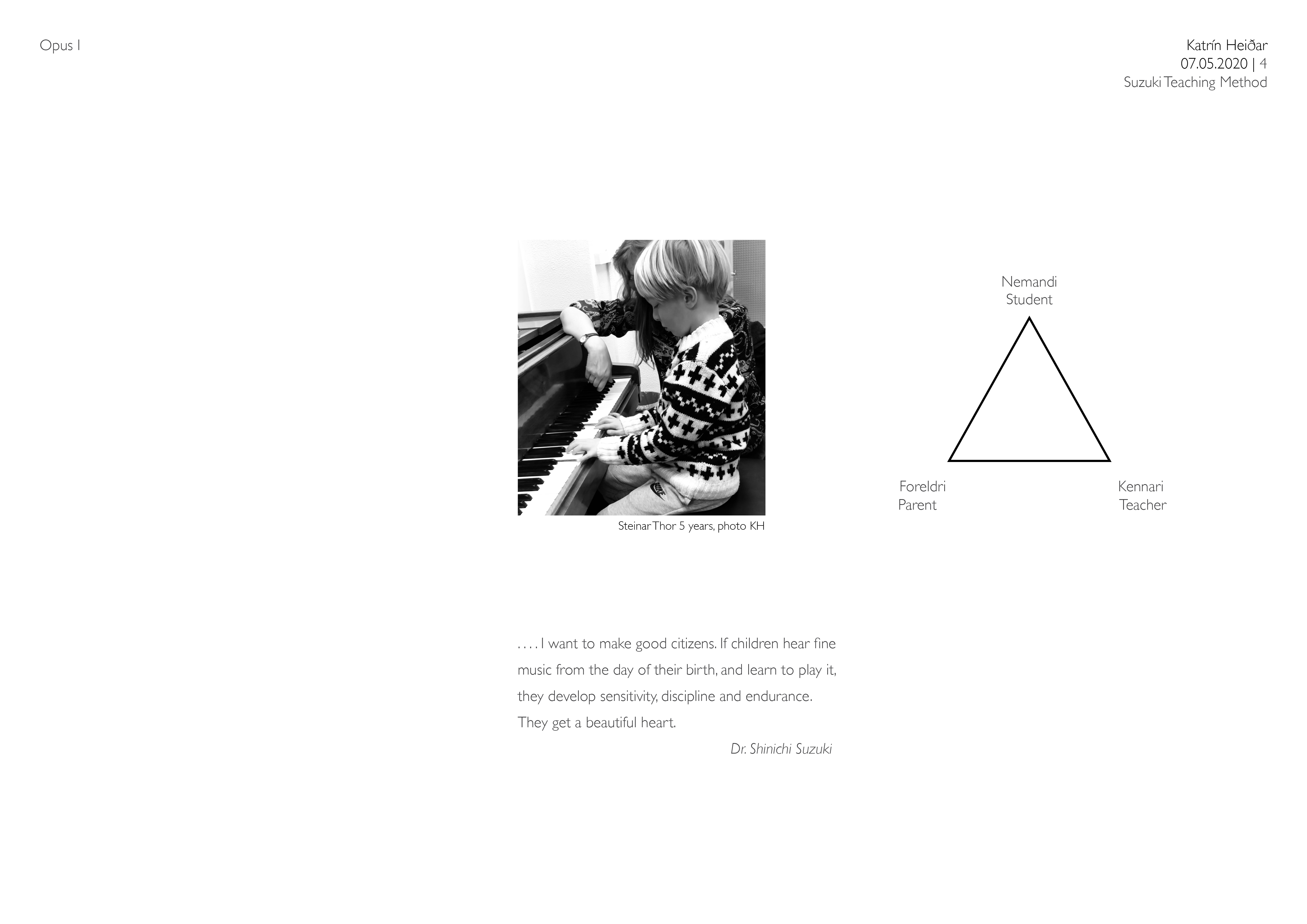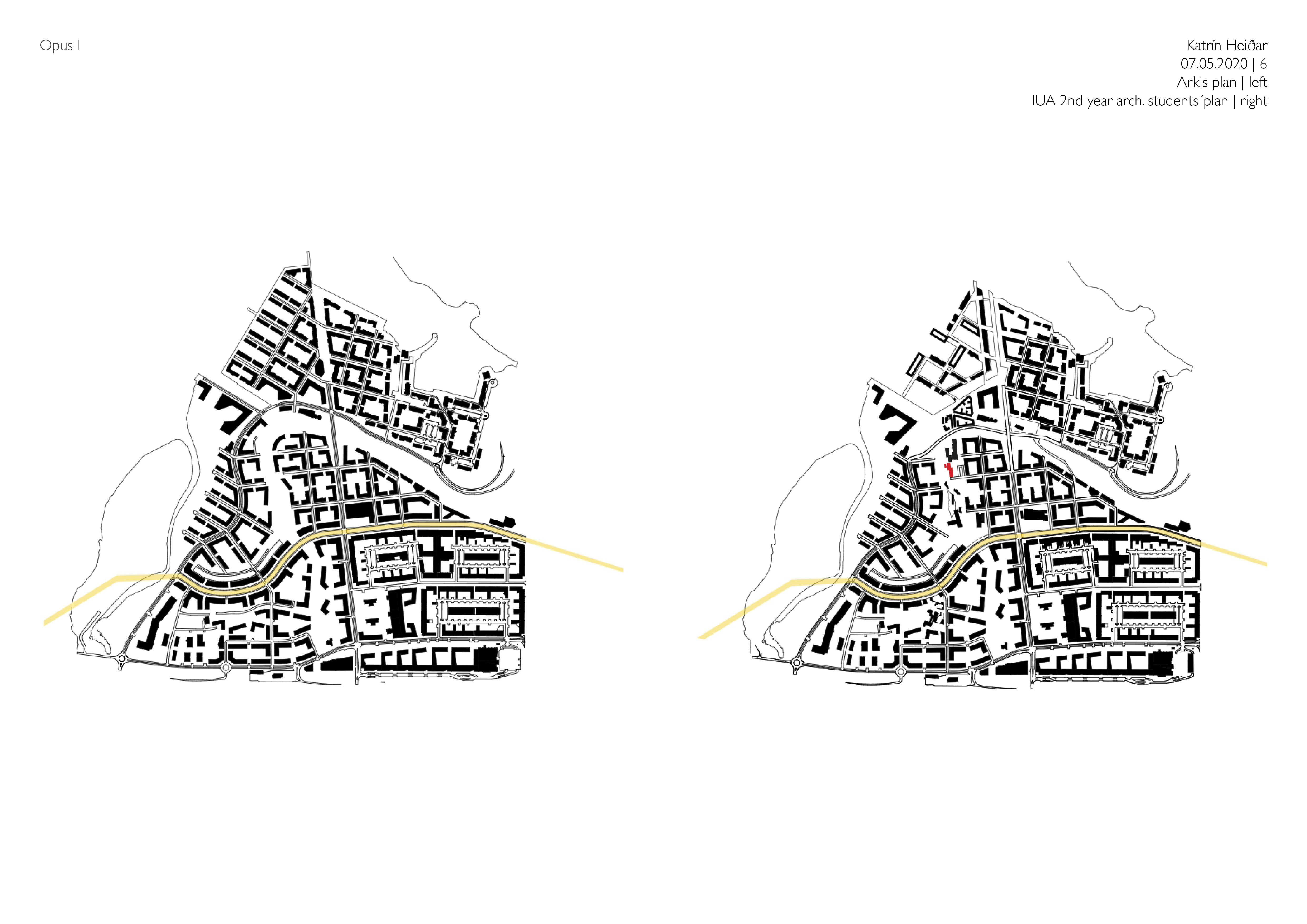VII. Höfðar, OPUS I , 2020
Katrín Heiðar — katrinheidar18 (at) lhi.is
The context of the design course Urban Lab - Design Agency for the academic year 2019-2020 is the area of Höfðar which is located in Reykjavik.
Map of Reykjavik with Höfðar in evidence
Höfðar hosts 2,751 inhabitants and more of 300 activities which altogether offer employment to thousands of people.

Map of Höfðar
54% of the surface of Höfðar is covered by water repellent materials which interfere with the natural water flow.

Water repellent surface in Höfðar
There are 8,764 parking lots in Höfðar which altogether cover a surface of 109,550 square metres.

Map of the parking places in Höfðar
By directly observing their usage it is discovered that on average only 50% of them is in use.

Map of the use of the parking places in Höfðar
These information tells us that a new plan for Höfðar must be envisioned one that is ecologically robust and socially vibrant.
In the Master Plan for 2030, Höfðar will be deeply tranformed: 6,200 new residential units will be built and ultimately support a population of over 15,000 inhabitants.

Proposed plan of Höfðar for 2030
This massive transformations give us the opportunity to designing Höfðar and reflecting upon contemporary urban living, to rethink the relationship among us and nature. A manifesto that embodies these intentions has been developed and it reads like this:
The Manifesto for Höfðar
Bigger context
When developing Höfði we should consider what purpose the area can serve in a bigger context. Reykjavík has been planned around the cars’ idea, which includes zoning and urban sprawl. This has created many problems both in urban planning as well societal. Höfði offers a good opportunity to reverse this development. The location of Höfði, close to the centre point of the urban area of Reykjavík, as well as the large unbuilt area, are important conditions for these changes.
What are the effects that Höfði should have on Reykjavík / Iceland / Earth?
A different transportation culture
Höfði will be the first area in Reykjavík to be developed with borgarlína (bus rapid transit system) in mind. It is important that we take radical steps in making borgarlína the first choice of transportation for most of the inhabitants of Höfði. We want to change the transportation culture of Reykjavík and to do that we need to create a walkable environment.
Organic evolution of a community
To create this sort of neighbourhood we need to make sure that certain essential services are present in a walking distance. The challenge is to integrate new residential dwellings within an existing environment. We want to create an opportunity for more diversity in the area, to achieve this we need to design adaptable architecture that is an architecture that is open to transformation and for a variety of services to evolve in an organic way.
Nature in everyday life
We want to make nature a part of everyday life of the people of Höfði. Nature can be translated in different forms: urban agriculture, coastal walks, riparian ecosystems. We would like nature to serve a purpose in the infrastructure of the area and in improving public spaces. The local geology, flora, fauna and ocean must all be taken into consideration.
With development there is always a certain disturbance of the ecosystem. We emphasize the importance of minimizing this disturbance. We need to be aware of the climate crisis and of its irreversible effects on cities and nature.
Green construction
We need to demand higher environmental and ethical standards not just in terms of materials and energy consumption but also in terms of processes and labour conditions. It is also important to consider the ecological and social benefit of repurposing buildings as a more ecological and social just way to imagine the future.
The effect of Höfði
It is clear to everyone that a societal change of behaviour is needed if we wish to prevent the worst-case scenario predicted by climate scientists. The effects of Höfði from an environmental perspective are limited, however we can create a model of ecological and ethical living. Iceland could lead the way into the future for radical experimentation in the way cities are planned and constructed.
Thirteen stories have been consequently developed by the second year students in architecture at the Iceland University of the Arts.
This is one of them.
O p u s I
We are living in a moment of pandemic crisis due to the sprad of the Covid-19. It is real and it effects every possible aspect of our lives. Humanity will overcome it but the world will not be the same. Recently much has been discussed in terms of public health in cities and places. For example, are places with high density worse during a pandemic, compared to the ones with a low density? Does density lead to unhealthy environments? Could the solution be higher density with less cars and more bike lanes, that provides better air quality? Urban planners, architects and designers have new roles in responding to a new world with their design. New rules and policies ought to be created. We are not only dealing with climate change, the rise of the sea level, migration of birds and water quality. Designers are faced with a new challenge. How can cities become a better place for our citizens and their health? We can create big beautiful parks, wide bike paths and mixed use areas for pedestrians. However that is not enough. We should foster collaboration between organizations, policies and programs to build and promote healthy cities and a better place to live. For example, we can see how interdisciplinary work in Iceland at the time of Covid-19, has been crucial in the response to the crisis (1).
In the course Höfðar 2030- Urban Lab Design Agency I designed a project that could reflect the challenges of good and responsible design. The area Höfði is centrally located in Reykjavík. Currently an industrial area, except for Bryggjuhverfið, which is the only defined residential area in Höfði. A cliff separates Höfði in two parts, top of Ártúnshöfði and lower landfill areas to the north and the west. According to a new city plan, Höfði will be a mixed residential area with around 15.000 residents and services. Some light industries will remain. The new development is the first one in Iceland to be designed around a public transport infrastructure (Borgarlína), with less emphasize on the private car.
For my project I designed a Suzuki music school at Eirhöfði 17. Music defines us as it brings beauty and light to the soul. Music creates depth and warmth in the human existence and helps developing empathy. Extensive research has shown the benefits of music education in young children. Music instructions accelerates the brain development, particularly the areas responsible for processing sound, language development, speech perception, and reading skills (2). Dr. Suzuki has had great influence on music education. In 1945, he developed a music teaching method, which still carries his name. The method is based on the idea that all children can learn to play an instrument just as they learn to speak their native language.
In my project I reused an existing concrete building that reflects the characteristics of the area and should be preserved and not demolished. It sits on the edge off the cliff with great views over Reykjavík and the coastline to the north. The structure was selectively deconstructed to create an open floor plan for seven semi-transparent classrooms, which invites for observation of students and their families. The building enhances conversations. The space surrounding the classrooms is important for social interactions, reading and communicating. An extension in form of a pavilion was added to the west of the building. The pavilion is made of glass and steel. It is a flexible space for small recitals, lectures, receptions etc. A garden for reflection was created to the west for teachers, students and their families, as well as for pedestrians passing by.
The building is designed with natural colors. Materials are mostly concrete, wood and glass. The original concrete walls are kept in their condition. Nature is emphasized and the house is welcoming and transparent. Walking paths surround the building and connect to the main paths developed in the area.
The project is given the name Opus I and symbolizes the beginning of a change at Höfðar. It is my hope that Opus I transforms and acts as a catalyst in creating the social values of Dr. Suzuki into spaces for sharing stories, building trust, and forging a community.
Dense cities need to have green open spaces for recreation and activities, respect for the environment and less emphasize on cars to promote healthy living. However, perhaps more than ever, collaboration between organizations and creating programs for citizens are vital. Planners, architects and designers have huge responsibility. Places with activities like school, music school, high focus on education and civic participation are all important in creating a better healthy place to live.
1. https://www.theguardian.com/world/2020/apr/21/milan-seeks-to-prevent-post-crisis-return-of-traffic-pollution
2. Abibi, H. (2016), “Neural correlates of accelerated auditory processing in children engaged in music training” in Developmental Cognitive Neuroscience




















Urban Lab - Design Agency
